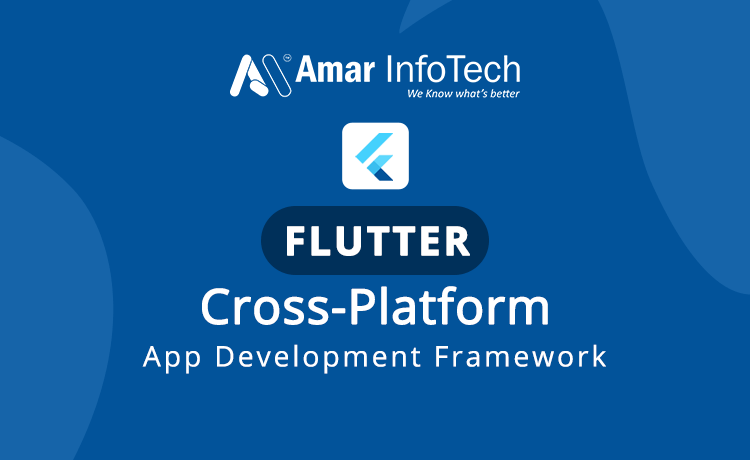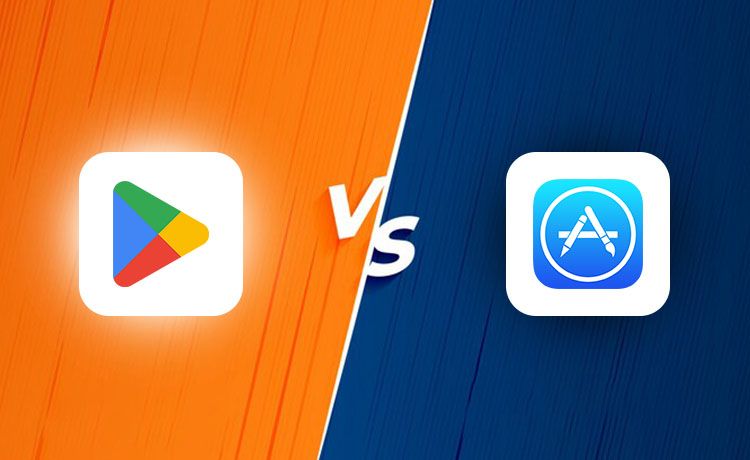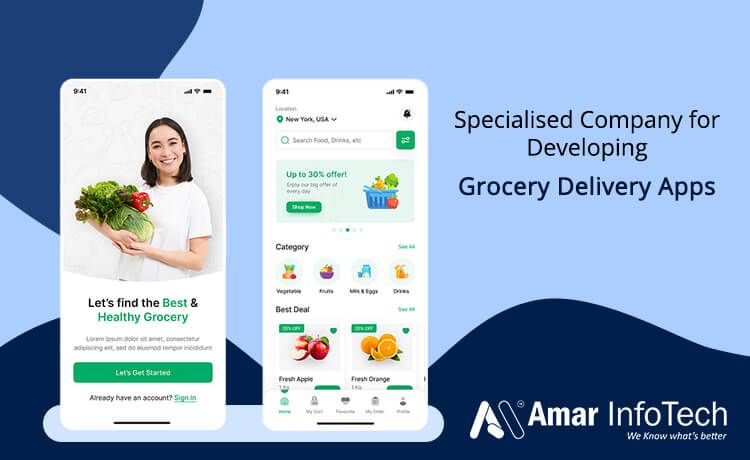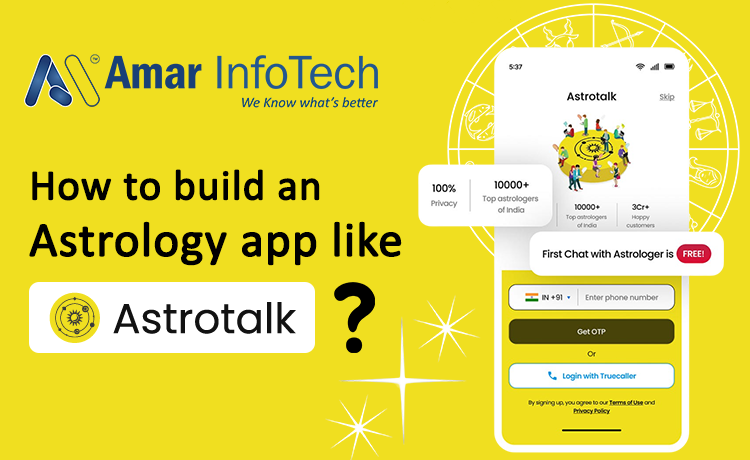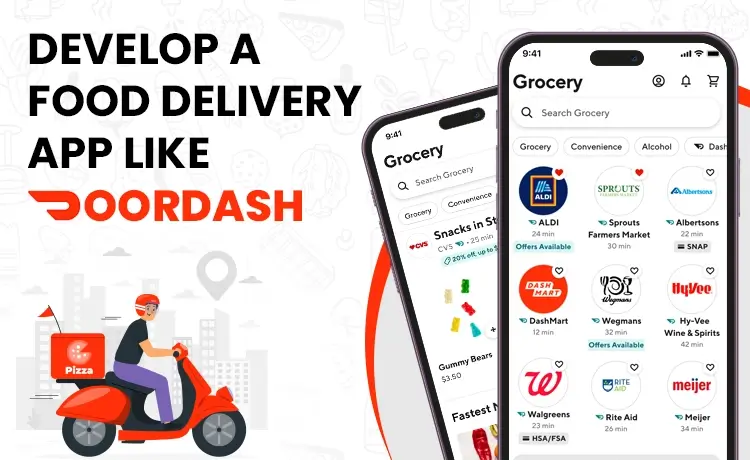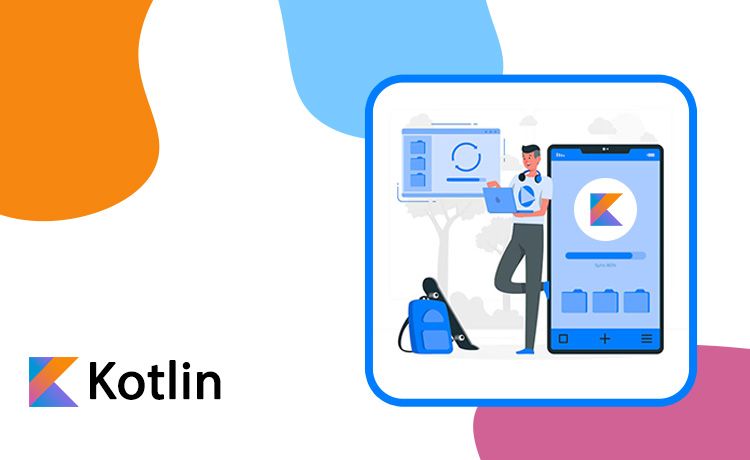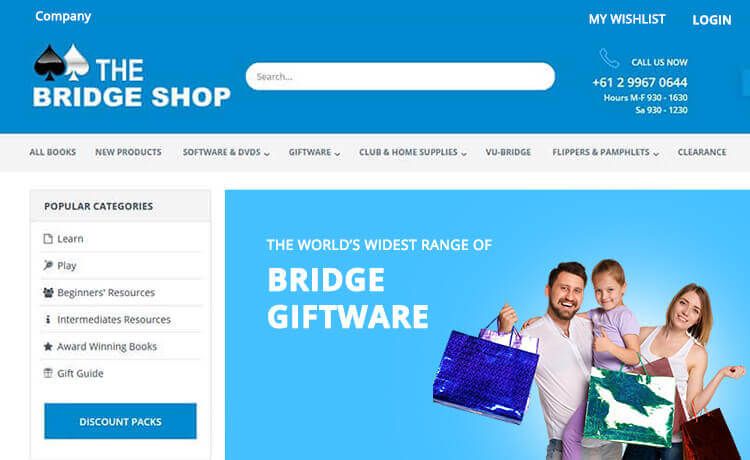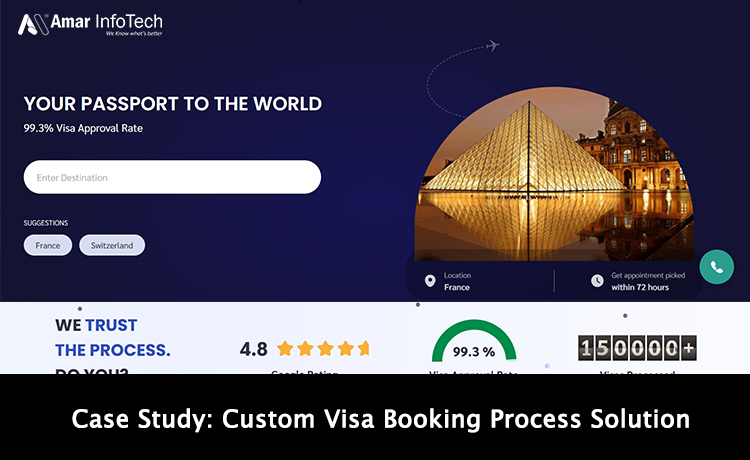In today's world, mobile applications have become an essential part of our lives, and businesses are continuously striving to provide the best user experience to their customers. With the increasing demand for mobile applications, the need for developing apps for multiple platforms has also increased.
This is where cross-platform app development frameworks come into play. Flutter, developed by Google, is one of the most popular and preferred frameworks for developing cross-platform mobile applications.
In this blog post, we will discuss why Flutter is the best cross-platform app development framework & future of Flutter.
- 1) What Is Flutter?
- 2) Why Use Flutter?
- 3) What Is React Native?
- 4) Flutter Vs. React Native: Which One To Choose In 2024
- 5) React Native Vs Flutter Which Is Easier To Learn
- 6) Why Flutter Is Bad
- 7) Flutter Better Than React Native
- 8) Benefits Of Flutter App Development
- 9) Limitations Of Flutter App Development
- 10) Flutter Architecture
- 11) Popular Apps Made With Flutter
- 12) Is Flutter Good For Web Development
- 13) Should You Use Flutter For Making A Desktop App?
- 14) Hire Flutter App Development Company
- 15) Conclusion
What Is Flutter?
Flutter is a free and open-source powerful mobile app development framework that can be used to develop Android apps, iOS apps, desktop apps, Windows-based apps, and web apps.
Flutter App Development relies on the Dart programming language, which was also developed by Google and follows an object-oriented paradigm. Flutter's architecture is based on the widget tree, where each element in the user interface (UI) is represented by a widget.
Widgets in Flutter are highly reusable and versatile building blocks that can be combined in a variety of ways to create complex UIs. With Top Flutter App Development Company, developers can leverage the power of Dart and Flutter's widget-based architecture to create high-quality and customizable mobile applications.
Why Use Flutter?
Flutter has gained popularity among startups looking to build cross-platform apps due to its fast development capabilities without compromising on performance or quality. Startups can quickly go-to-market with their apps using Flutter, enabling them to compete in their respective markets more effectively.
Additionally, Flutter's ability to offer multiple platforms makes it an attractive choice for companies seeking to reach a wider audience with their apps.
What Is React Native?
Amar Infotech offers React Native App Development services that utilize Facebook's open-source mobile application development framework, React Native. This powerful framework enables developers to create high-performance mobile applications for both iOS and Android platforms using JavaScript and React, a widely-used JavaScript library for building user interfaces.
With Amar Infotech's React Native App Development expertise, businesses can leverage the benefits of this cutting-edge technology to create powerful mobile applications that meet their unique requirements.
Flutter Vs. React Native: Which One To Choose In 2024?
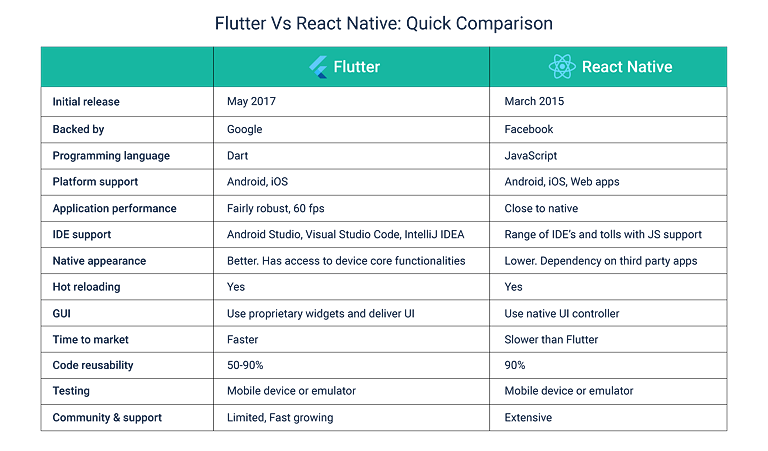
Flutter and React Native are two of the most popular cross-platform mobile app development frameworks available in 2024. Both have their own set of strengths and weaknesses, and the choice between them largely depends on the specific needs and preferences of the project.
Here are some factors to consider when deciding between Flutter and React Native:
- Performance
- Development Speed
- User Interface
- Community Support
Flutter is known for its exceptional performance, thanks to its use of Dart programming language and its customizable widgets. React Native also offers high performance, but some users have reported issues with slow loading times and lagging animations.
Flutter's hot reload feature allows for quick iteration and development, making it faster than React Native. However, React Native's use of JavaScript and its vast community of developers and resources may provide faster development times for those with prior JavaScript experience.
Flutter provides customizable and native-like widgets, making it easy to create beautiful and complex UI designs. React Native also offers a wide range of third-party UI libraries and components, but some developers may find it challenging to create complex designs.
Both Flutter and React Native have active and supportive communities that offer extensive documentation, resources, and community-driven packages. However, React Native has a larger and more established community, which may provide faster support and solutions to issues.
Visit our blog to access more detailed information - React Native vs. Flutter — What to Choose in 2023
React Native Vs Flutter Which Is Easier To Learn
Both React Native and Flutter have their own learning curves, and the ease of learning largely depends on a developer's prior experience and skills. However, there are some differences between the two that may make one easier to learn than the other for certain developers.
Enroll in React Native Training to learn how React Native, a popular mobile application development framework, is built on top of JavaScript and React. With its familiar syntax and concepts, developers with prior experience in JavaScript and React may find it easier to grasp React Native's principles when building user interfaces.
Join our Flutter App Training program to discover how Flutter utilizes the Dart programming language, which may be less popular than JavaScript, but is relatively easy to learn. Dart shares many similarities with other object-oriented programming languages like Java and C#. Flutter also offers an abundance of resources and extensive documentation to facilitate the learning process for developers looking to build mobile apps.
Why Flutter Is Bad
Flutter is a popular and widely used cross-platform mobile app development framework, but like any technology, it has its own set of limitations and drawbacks.
Here are some potential reasons why someone might consider Flutter to be "bad":
- Learning Curve
- Limited Community Support
- Platform Limitations
- App Size
- Immature Technology
While Flutter has a relatively easy learning curve compared to some other cross-platform frameworks, it may still require developers to learn a new programming language (Dart) and the Flutter framework itself.
Compared to other frameworks like React Native, Flutter has a smaller community of developers and resources available. This may make it harder to find solutions to issues and may limit the availability of third-party libraries and packages.
While Flutter allows for cross-platform development, it may not be the best option for every project. For example, some complex applications may require native platform APIs and libraries that are not yet available in Flutter.
Flutter applications can be larger in size compared to native applications due to the need to include the Flutter engine and framework within the app.
While Flutter has gained significant popularity in recent years, it is still a relatively new technology compared to other frameworks. This may make some developers hesitant to adopt it due to concerns about its stability and long-term viability.
Flutter Better Than React Native
It's not accurate to say that Flutter is "better" than React Native or vice versa. Both Flutter and React Native have their own strengths and weaknesses, and the choice between them depends on the specific needs and requirements of the project.
Flutter is known for its exceptional performance, customizable widgets, and fast development cycle. It also provides a single codebase for both iOS and Android platforms, allowing for quicker development and easier maintenance. Additionally, Flutter has a strong focus on design and UI, making it easy to create beautiful and complex UI designs.
On the other hand, React Native has a larger and more established community, which provides a wider range of third-party libraries and resources. React Native is built on top of JavaScript and React, which are popular and widely used technologies, making it easier for developers with prior experience in those areas to learn and use.
Benefits Of Flutter App Development
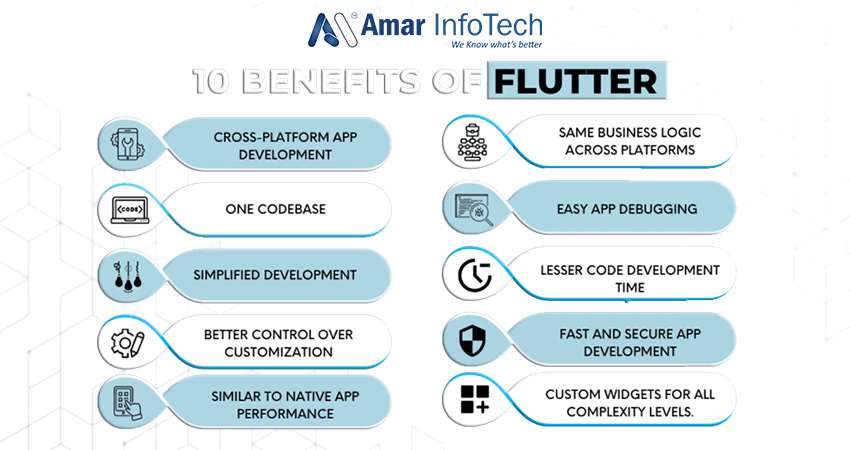
Flutter is a popular open-source mobile app development framework that has gained immense popularity in recent years. Developed by Google, Flutter offers a range of features that make it an ideal choice for building high-performance mobile applications for both iOS and Android platforms.
Here are some of the key features of Flutter:
- Fast Development
- Single Codebase
- Native Performance
- Customizable Widgets
- Strong Community Support
- Cost-Effective
Flutter is known for its fast development capabilities. It allows developers to create mobile applications in a short span of time, thus reducing the time-to-market. Flutter's hot reload feature enables developers to see the changes made in the code in real-time, making the development process faster and more efficient. This feature eliminates the need to rebuild the entire application each time a change is made, reducing the development time significantly.
Flutter allows developers to write a single codebase for both iOS and Android platforms. This means that developers do not need to write separate code for each platform, reducing the development time and effort. The single codebase also reduces the chances of errors and bugs as developers do not need to manage two separate codebases.
Flutter uses a native approach to rendering the user interface, providing a native-like experience to the users. The apps built with Flutter are fast and smooth, providing an excellent user experience. Flutter's widgets are designed to look and feel like native widgets, providing a seamless experience across platforms.
Flutter provides a wide range of customizable widgets that can be easily tailored to meet the specific needs of the application. These widgets are highly adaptable, allowing developers to create unique and appealing user interfaces for their applications.
Flutter has a strong community support, making it easier for developers to find solutions to their problems. The community provides a vast range of libraries, tools, and plugins that can be used to enhance the functionality of the application. The community also provides active support and updates, ensuring that developers have access to the latest features and improvements.
Flutter is an open-source framework, making it a cost-effective option for businesses looking to develop mobile applications. The development cost is reduced significantly as developers do not need to write separate code for each platform.
Limitations Of Flutter App Development
Flutter, like any other technology, has certain limitations that developers should be aware of before choosing it as their development framework.
Here are some of the limitations of Flutter app development:
- Limited Libraries
- Limited Native Access
- Large Application Size
- Limited Support for Older Devices
- Learning Curve
Compared to other frameworks, Flutter has a smaller set of libraries and tools. This can make it challenging to implement some features.
Flutter does not offer full access to native features of the device, which can limit the functionality of certain applications.
Flutter applications have a large file size, which can make them slower to download and install.
Flutter requires devices with higher processing power and newer operating systems, which limits its compatibility with older devices.
Flutter uses the Dart programming language, which can be challenging for developers who are not familiar with it. This can increase the learning curve for new developers.
Flutter Architecture
Flutter architecture is based on the reactive programming model, which means that the application reacts to user input and updates the user interface (UI) accordingly.
Flutter has a layered architecture that consists of the following components:
- Dart Framework
- Flutter Engine
- Widgets
- Material Design and Cupertino Design
- Plugins
- Dart Virtual Machine (VM)
- Platform Channels
Flutter is built using the Dart programming language, which is a high-performance, object-oriented language. It includes features like garbage collection, a just-in-time (JIT) compiler, and a ahead-of-time (AOT) compiler, making it efficient and fast.
The Flutter engine is the core of the framework, which is responsible for rendering UI, animations, and gesture recognition. It communicates with the platform-specific code using platform channels.
Flutter uses widgets to build the UI of the application. Widgets are building blocks of the user interface and can be combined to create complex UI elements. There are two types of widgets: stateless and stateful widgets.
Flutter provides two design systems: Material Design for Android and Cupertino Design for iOS. These design systems are pre-built UI components that follow the guidelines for each platform, which simplifies the development process.
Flutter provides a large number of pre-built plugins that allow developers to add functionality to their applications. These plugins are open-source and can be used to add features like camera, location, and social media integration.
The Dart VM is a runtime environment that executes Dart code. It is used by the JIT compiler during development and by the AOT compiler during deployment.
Platform channels are used to communicate between the Flutter engine and the platform-specific code. They are used to access native features like camera and sensors, and to receive platform events like notifications and lifecycle events.
Popular Apps Made With Flutter
Flutter has been used to develop a wide range of popular mobile applications.
Here are Top 10 Flutter Apps Examples:
- Google Ads
- Reflectly
- Alibaba
- Hamilton Musical
- Hookle
- Birch Finance
- Realtor.com
- PostMuse
- WaterMinder
- Safaidaar - Laundry Marketplace App
The Google Ads app for Android and iOS was built using Flutter. The app allows users to manage their Google Ads campaigns and view performance metrics.
Reflectly is a popular journaling app that helps users practice mindfulness. It was built using Flutter and features a clean and modern user interface.
Alibaba, the largest online retailer in China, used Flutter to build its Xianyu app. The app allows users to buy and sell used items.
The official app for the hit Broadway show "Hamilton" was built using Flutter. The app includes show information, ticket sales, and merchandise sales.
Hookle is a social media management app that was built using Flutter. The app allows users to manage their social media accounts and schedule posts.
Birch Finance is a personal finance management app that was built using Flutter. The app helps users track their spending, manage their credit cards, and earn rewards.
Realtor.com used Flutter to build its real estate listings app. The app allows users to search for homes, view photos and videos, and contact real estate agents.
PostMuse is a social media content creation app that was built using Flutter. The app provides users with customizable templates to create posts for social media.
WaterMinder is a water tracking app that was built using Flutter. The app allows users to track their water intake and set reminders to drink more water.
Safaidaar is a Laundry Marketplace App that was built using Flutter. The app provides users with Eco-friendly Cleaning Products and Services.
These apps showcase the versatility and capabilities of Flutter, and demonstrate how it can be used to build high-quality mobile applications for various industries and purposes.
Is Flutter Good For Web Development
Yes, Flutter can be used for web development. Flutter allows developers to build web applications using the same codebase as mobile applications, which can save development time and effort and make flutter unique than other technology. Flutter provides a feature called Flutter for Web, which allows developers to compile Flutter code to HTML, CSS, and JavaScript, and run it in a web browser.
Should You Use Flutter For Making A Desktop App?
Flutter is a versatile and powerful framework that allows developers to build high-quality mobile, web, and desktop applications. However, whether or not you should use Flutter for making a desktop app depends on several factors, such as your development experience, project requirements, and target audience.
Here are some factors to consider when deciding whether to use Flutter for making a desktop app:
- Development Experience
- Project Requirements
- Target Audience
If you already have experience with Flutter for mobile or web development, using it for desktop development could be a natural extension. However, if you're new to Flutter, you may need to invest some time and effort to learn how to use it effectively for desktop development.
If your desktop app requires platform-specific features or native integration, Flutter may not be the best choice. Flutter currently supports Windows, macOS, and Linux platforms, but it may not have all the necessary plugins and packages for every platform-specific feature.
If your target audience primarily uses desktop devices, using Flutter for desktop development could be a good choice. However, if your audience primarily uses mobile devices, it may be more effective to use Flutter for mobile development instead.
Overall, Flutter can be a good choice for making a desktop app, especially if you already have experience with Flutter and your project requirements align with Flutter's capabilities. However, it's important to consider the specific factors and limitations of Flutter for desktop development before making a final decision.
Hire Flutter App Development Company
Amar Infotech is a software development company that offers Flutter app development services. We have a team of experienced Flutter developers who can build custom applications for Android and iOS platforms. We also provide other services such as web development, e-commerce solutions, and digital marketing.
Amar Infotech has been in business for over a decade and has worked with clients from various industries such as healthcare, finance, education, and e-commerce. We follow an agile development process and provide timely delivery of projects. We also offer ongoing support and maintenance services to our clients.
If you are interested in hiring a Flutter app developer for your project, you can contact us for a consultation. As with any company, it is recommended that you do your own research and due diligence to ensure that they are a good fit for your specific needs and requirements.
Conclusion
Flutter has proven to be a reliable and efficient framework for app development, providing developers with an excellent platform to build scalable and high-performing applications. The framework has also made it possible for businesses to create applications that work seamlessly across multiple platforms, reducing the development cost and time.
Overall, Flutter is a great choice for businesses and developers who want to create high-quality, engaging, and cross-platform mobile applications. Its popularity continues to grow, and it is expected to become even more dominant in the coming years. So, if you're looking to build a cross-platform app, Flutter is definitely a framework worth considering.
